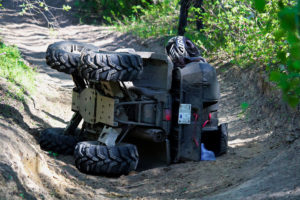The below information is taken directly, word for word, from the American Association for Justice's online pamphlet "Why We Need the Civil Justice System: TOYS". The American Association for Justice is a group of trial attorneys, nationwide, who devote their time to protecting the injured and their families.
Choking Hazards
The choking hazards of small toy parts, small balls, and balloons have long been one of the leading causes of toy-related fatalities. At least 196 children died from choking on such items between 1990 and 2007, and choking hazards were the leading cause of CPSC toy recalls in 2009. Yet the millions of recalled toys may just be the tip of the iceberg. Many toys still on shelves barely meet the CPSC standard for small pieces. Of particular danger are objects that are narrow in shape, such as toy nails or darts, because they can more easily cause suffocation. In 2007, at least two boys died after asphyxiating on soft darts from Chinese-made toy guns. The toy's importer refused to recall the gun. At least one other child died under the same circumstances before a civil action by one of the families persuaded the retailer to pull it off shelves.
The Unexpected
Nearly a quarter of a million children are treated at U.S. emergency rooms for toy-related injuries every year. Injuriesfrom scooters, choking hazards, and lead-contamination are always in the news, but beyond the headlines lie a myriad of dangers: beads that contain date rape drugs, asbestos and other exotic toxins, baby boats that drop their infant occupants under water, toy helicopters that catch fire, or aromatherapy kits that detonate with acid. Every year brings new hazards to confound even the most cautious parent.
Magnets
Over the last several years, toy manufacturers have increasingly used small, powerful magnets, creating a new category of deadly toys. These magnets can come loose and be swallowed by small children. Unlike other small objects, which are often passed through the body, magnets pose a unique risk. If two or more magnets are swallowed, they can attract to each other through intestinal walls. This can result in pinched, blocked or twisted intestines. The effect is fast and devastating. Magnets quickly erode through the intestinal wall, spilling bacteria into the body. Serious infections, blood poisoning, and even death may result.
Children's Jewelry
Children's jewelry is more likely to contain lead or other toxic metals than many other toys. Even after 18 million pieces of children's jewelry were recalled between 2005 and 2007, CPSC tests still found that 20 percent of children's jewelry contained unsafe levels of lead. Even after manufacturers stopped using lead, the danger was not over, as many began to use the carcinogenic metal cadmium as a replacement. What's more, the vast majority of recalled items were never actually returned, meaning toxic jewelry remains on children's dressers.
Lead
The danger most frequently encountered with toys is invisible to even the most watchful parent's eye: lead contamination. Lead is the second most deadly household toxin in existence, after arsenic, and no level of exposure is safe. Yet every holiday season is marked by incidences of children being sickened by lead-tainted toys. One study found a third of all tested toys contained lead. Most were still on store shelves and allegedly passed toy manufacturers' internal tests.

The Legal Examiner and our Affiliate Network strive to be the place you look to for news, context, and more, wherever your life intersects with the law.










Comments for this article are closed.